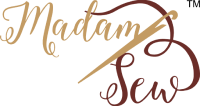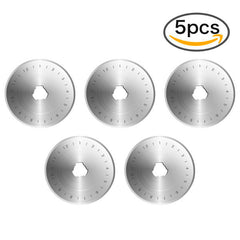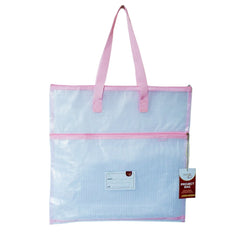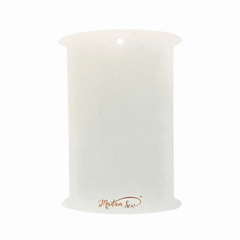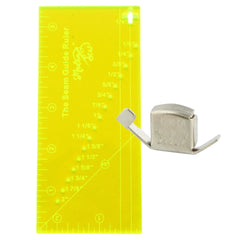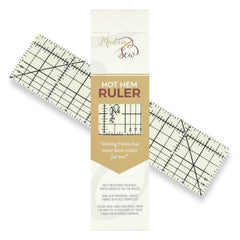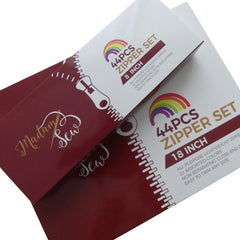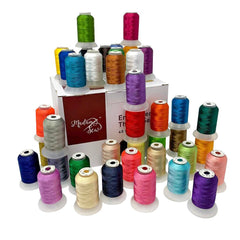The Serger Versus Sewing Machine Debate
When you learn how to sew and get your first sewing kit together, you don’t run to the store to buy a serger. You get a basic sewing machine, scissors, a measuring tape, a fabric marker, pins, needles, and a seam ripper. But, along the way, you will buy more and more tools that make the sewing process so much easier and speed it up considerably. Sewing clips for heavier fabrics, a stiletto to push the fabric under the needle, a hot hem ruler to hem faster. One of those tools could also be a serger. For this tool you need a budget and to make the decision whether it is worth the investment, which is not lightly taken. That is how I see it. If you sew garments, you will need to finish a lot of edges, doing that with a regular household sewing machine is possible. And, there are tools that make doing that easier.
Let’s look at the pros & cons of getting a serger, the costs, and some tips for finishing edges without a serger.
Sewing Machines vs. Sergers: Do You Need Both?
When diving into the world of sewing, many beginners and even experienced sewists wonder whether they need both a sewing machine and a serger. While both machines play essential roles in garment construction and finishing, they serve different purposes. Understanding their differences, advantages, and potential investments will help you decide what’s best for your sewing needs.
What’s the Difference Between a Sewing Machine and a Serger?
A sewing machine is a machine that allows you to sew pieces of cloth together with threads. You can do straight stitches, zigzag stitches, decorative stitches, and sew buttonholes. It’s used for constructing garments, bags, and different kinds of accessories. You can can also use it for quilting, basic embroidery and mending. A sewing machine typically uses two threads, a top thread (spool) and a bobbin thread. In this article on our blog you can find out more about how a sewing machine works.
A serger (also known as an overlocker) is designed specifically for finishing edges, sewing seams and tiny rolled hems, and preventing fabric from fraying. It trims excess fabric before the stitches encase the raw edge. A serger finishes your fabric's raw edges and seam allowances with a neat, professional-looking wide stitch that is made with three to four threads. If you wonder what the stitches look like, you can take a look at the inside seams of most ready-to-wear clothing, and you’ll see the characteristic overlock stitch a serger makes.
Although a serger is primarily used for finishing seams, you can also sew knits and stretch fabrics with a serger. The stitches a serger makes are stretchy. However, a serger cannot replace a sewing machine. Don’t try to sew your woven fabrics with a serger. You can construct lycra leggings with a serger but you cannot construct a cotton blouse with only a serger.
Many sergers also have settings for decorative stitches. You can sew thin rolled edges on delicate fabrics or napkins using a different setting and disengaging the knife of a serger.
Do You Need a Serger?
The need for a serger depends on what type of sewing you do. Here are some considerations:
You May Want a Serger If:
• You sew a lot of garments and want professional-quality seam finishes
• You frequently work with delicate fabrics
• You frequently work with knits and stretch fabrics, which benefit from the flexibility of serger stitches
• You are not comfortable finishing raw edges with a zigzag stitch or pinking shears any more and you want faster seam finishing and a more polished look
If you primarily sew simple and small projects, or if you are mainly doing patchwork and quilting, you probably don’t need a serger. You can finish edges, sew delicate fabrics or knits with a regular machine. It will just take a little more time and consideration to do it in a professional way.
Pro’s and Con’s of a Serger
Pro
Finishing edges with a serger is the way to go if you want professional durable finishes. The edges will be finished like they would in the factory.
The speed of a serger is impressive and one of the key advantages compared to finishing edges with a sewing machine. It trims and sews the serger stitches simultaneously.
Con
There is a steep learning curve to set up a serger and change the threads when you need another color. You probably know how thread tension is hard to get right on a sewing machine, well…juggling three or four threads is harder and the first time you try to thread a serger you will think you will never manage. It looks so complicated. A lot of fellow sewists never touch the threads of their serger and never change the color just because it is so hard and luckily the serger spools hold a lot of thread.
The knife that cuts the fabric, adds a dimension to the learning curve. You will have to be more careful with a serger than a sewing machine. Once that fabric edge is cut off by your serger, it is cut off. If you accidentally grab another piece of the fabric of your project under the serger, it is damaged for good, your seam ripper won’t help you darn that cut.
A serger is not a cheap machine and it isn’t as versatile as a sewing machine, therefore you can say it is an expensive investment.
A serger takes up space. If you don’t have a dedicated sewing corner or room, you will need extra storage space.
Can You Finish Edges with a Regular Sewing Machine?
Yes! If you don’t have a serger, there are multiple ways to prevent fabric edges from fraying:
• Zigzag Stitch: Finish the edges of a seam with a zigzag stitch on your sewing machine. This is a very common method among hobby sewists.
• Overcast Stitch: You can use an overcast presser foot and an overcast stitch on a regular sewing machine to mimic serger stitches and to create a clean edge. I sometimes prefer this finish over the serger because I can choose the thread color more easily.
• French Seams: Enclose the raw edges completely with a French seam. This is a great finish for lightweight fabrics, and is very professional looking.
• Bias Binding: Encase the edges with bias tape. This finish is used a lot on non-lined jackets.
And you can even use no sewing machine at all to finish your edges. Just cutting the edges with pinking shears will reduce the fraying as well.
Buying a Serger
Buying a serger is a long-term investment. If you are not planning on pursuing sewing as a hobby for a long time, it might not be worth the money.
You can get a 3-thread, a 4-thread or a 5 thread serger. I would go for a 4-thread machine. You can of course sew with 3 threads as well and I feel that 3 and 4 thread stitches are the most commonly used. If you are sewing with a lot of heavy-duty fabrics, you might want to consider a 5-thread serger.
Most sergers have a “differential feed” knob, allowing you to adjust how the fabric is fed through, which prevents stretching and puckering on lightweight fabrics. With differential feed, there are two sets of feed dogs that move at different speeds instead of the same speed like in a regular sewing machine. Change this setting when you are getting stretched-out seams, when you want a wavy, lettuce-edge hem or want to make gentle gathers.
A good serger should run at 1,200-1,500 stitches per minute (SPM) for efficiency.
Most sergers have a threading system with color-coded guides to help you guide the thread more easily. The two images below are from my Juki serger.
Some high-end sergers have an air-jet-threading feature that automatically threads the lower looper and sometimes the upper looper with just the push of a button or lever. I haven’t tested this technology. You will need to dig a little deeper in your wallet to get a serger with this feature.
A basic sewing machine costs about $100 - $300, for a midrange sewing machine you will pay $300 - $700 and high end machines can go as high as $5000. A basic serger will be between $200 and $400, midrange $400-$1000 and high-end sergers range between $1000 and $3000. These price ranges are not far from each other but I feel that you can easily find a good quality basic sewing machine for $250, but if you buy a cheap serger, you might face some issues with your machine pretty quickly. The very basic sergers tend to be hard to thread, hard to get the thread tension in balance, rattle more, and have difficulty handling heavier fabric fabrics.
Juki and Babylock are considered durable trustworthy serger brands. Brother and Janome are more budget-friendly but still reliable.
Conclusion: Which One Should You Choose?
If you are just starting, a sewing machine is essential. It allows you to construct garments, mend clothes, and explore different sewing techniques. If you later find yourself sewing frequently, especially with knit fabrics or garments, a serger is an excellent investment for achieving professional finishes.
Whether you stick with a sewing machine or add a serger to your toolkit, understanding the differences between the two will help you make the best choice for your sewing projects!
Happy Sewing! Happy Finishing Edges!
An
Blogging for Madam Sew
